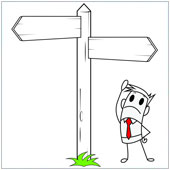
- Using it only for job searches. One of LinkedIn’s most powerful tools is the job search, as you can tap into the hidden market of jobs, reach out to contacts for potential job openings, or find people to hire for your organization. Where this becomes a problem is when LinkedIn users only use the network when they are actively looking for a job. You should make an effort to keep your profile and connections up-to-date and be active even when you’re not looking for a job or for someone to hire.
- Having an incomplete profile. One of the key aspects of any social network is your profile. It’s the online representation of who you are, and an incomplete profile is like an incomplete picture of who you are. At the very least, you should have information about all the important companies/jobs you’ve had, and your main achievements associated with those jobs. Sprinkling in industry-recognized keywords helps as well; it makes you and your expertise easier to find.
- Not belonging to groups. The groups we associate with make up a large part of who we are. LinkedIn is no different, and the site boasts a ton of professional groups, including college alumni and industry specific groups. Joining these groups is a great idea, as you can connect with colleagues and other professionals, share your experience, and keep your finger on what’s going on. You might even find your next big business idea.
- Not making connections. We’ve said it before, we’ll say it again: LinkedIn is all about connections. If you only connect with people when you need something, you will reduce the efficacy of the network. You should be actively looking for people that you know – personally or professionally – and connect with them. At the same time, don’t connect with anybody and everybody. LinkedIn should be your online professional network – only connect with people you actually know or have met.
- Not a team effort. With social networks like Facebook, colleagues are usually reluctant to connect with workmates. This can be a good idea for Facebook and helps you keep your personal and professional lives separate. (After all – who wants their boss seeing evidence of his employee’s weekend shenanigans?) LinkedIn is different. On LinkedIn it is beneficial to connect with your current colleagues, as the main idea of the service is to help you establish professional connections. The best place to start making connections is your current job, so encourage your team members to have profiles and to connect with each other.
Through effective use of LinkedIn, you should be able to build a solid professional network that spans time zones, if not countries, and could provide you with your next big opportunity. If you have questions about LinkedIn or social networking in general, we would love to talk to you.
Published with permission from TechAdvisory.org. Source.

